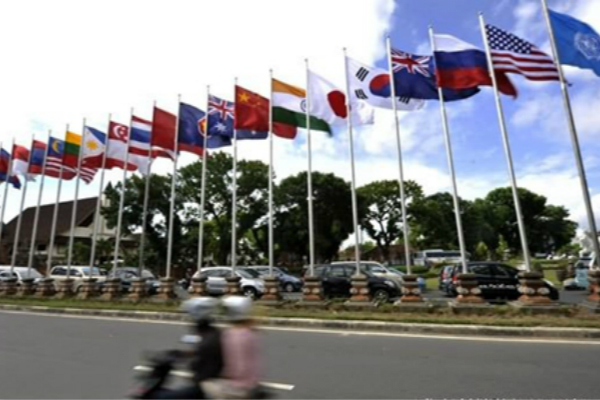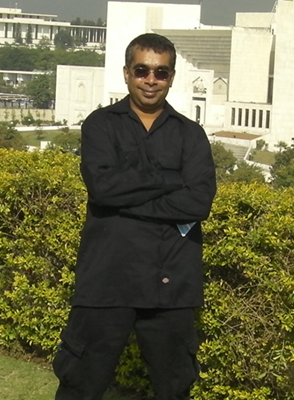 |
The following is an email interview by Panview with Mathew Maavak, a doctoral researcher in security foresight at University Technology Malaysia (UTM), on his opinion on China's "Belt & Road" initiative.
Panview: Geo-politics in the Asia-Pacific region continues to face turbulent times. What are your thoughts about the current state of this region?
Maavak: Actually, they are not as "turbulent" as the Western media makes them out to be. Verbal spats – common to the Asia Pacific – are not the same as the pandemonium currently afflicting the West, Middle East and North Africa (MENA) as well as Afghanistan and Pakistan. Is there a single ongoing war in the Asia Pacific?
Siblings routinely engage in fierce verbal spats and physical jostling; why should other nations be any different? Asia-Pacific countries have restrained their mutual antagonisms within civilized bounds. Let's keep it that way.
The only turbulence ahead for the Asia Pacific is the yet incalculable fallout of the ongoing economic slowdown. Here is where the Belt & Road initiative can play a crucial stabilizing role. China can be a regional stabilizer through a soft power projection of its Belt and Road initiative.
Panview: Can Beijing and Tokyo ease diplomatic tensions in the near future?
Maavak: Diplomatic tensions can naturally be eased if both parties are allowed to sort out their differences on their own volition. After all, Japanese companies had played a significant role in China's whirlwind economic transformation. Bilateral industrial and economy ties are increasing by the year, benefiting citizens and businesses of both nations.
Tokyo, however cannot establish closer rapport with Beijing as long as Japan's Foreign and China policies are dictated by Washington. Furthermore, Japan can never fully repent of its wartime atrocities as long as Washington remote controls its foreign policy.
The media in both countries should play a more positive role. To claim that both nations are willing to risk a war over tiny islands rich in fisheries is ridiculous. But that's exactly how the Western media amplifies such tensions.
Panview: What is the right solution to resolve territorial claims in the South China Sea?
Maavak: Negotiations should only involve claimant nations. Non-claimant outside parties have no business in getting involved in regional boundary disputes. All claimant parties -- China and relevant Association of Southeast Asian Nations (ASEAN) nations -- can agree to a broad legal framework, which can be refined as negotiations proceed towards a lasting solution.
Until these disputes are territorially resolved through peaceful means at some future date, all claimant nations should be goaded to jointly develop resources in the region – whether it is over fossil fuel, fisheries or even tourism. These joint economic activities should be restricted to claimant nations only.
Furthermore, disputed islands can be jointly used for oceanographic studies and observation. They can serve as an early warning tsunami observatory or as a centre for marine fisheries. The opportunities are boundless. There is a win-win scope here till border issues are permanently resolved.
Territorial disputes within ASEAN have rarely, if ever, escalated beyond legal wrangling and diplomatic rhetoric. It took decades for Malaysia to resolve a territorial dispute with both Indonesia (Ligatan and Sipadan Islands) and Singapore (Pedra Branca).
It's not just China that is laying claim to contested waters or islands in the South China Sea. Many ASEAN nations have similar disputes among themselves. But again, the Western media mendaciously depicts these disputes as a China vs ASEAN affair. Panview: Can we expect ASEAN to play a larger diplomatic role in the Asia-Pacific region? What is the future of the Asia-Pacific region?
Maavak: Southeast Asia is a colorful tapestry weaved by aeons of indigenous cultures as well as civilizational strands from China and India. By virtue of being bridges between both ancient civilizations, ASEAN is a natural buffer of stability as well as a beltway for prosperity.
These unique factors alone equip ASEAN to play a larger arbitration and diplomatic roles in the Asia Pacific and Indian Ocean regions. President Xi Jinping's exhortation of "Asia for Asians" is timely. Let's resolve our own issues our own way.
The future of the Asia-Pacific region may likely be clinched by greater cooperation in the science, technology and innovation (STI) field. It's my personal dream to see ASEAN forge the Southeast Asian node of a much larger, Eurasian Silk Road for STI.
The industries of tomorrow can only be built on the foundations of STI. We need more science and development and less politics for Asia Pacific.
Panview: Can the Belt & Road initiative and more regional free trade deals improve relations among countries in the Asia-Pacific region?
Maavak: Why not? Apart from new infrastructure, greater connectivity and new trade opportunities, the Belt & Road initiative can help build a pan-Asian pool of human resource that will be unmatched anywhere in the world.
The Organization for Economic Co-operation and Development (OECD) estimates that up to 75 percent of global Science, Technology, Engineering and Math (STEM) graduates will be come from the Brazil, Russia, India, Indonesia and China (BRIICS) nations by 2030. India and China alone will account for as much as 60 percent of global STEM graduates by 2030. Europe and the US, on the other hand, will be lagging well behind at 8 percent and 4 percent respectively.
A bewildering array of infrastructure will be needed to accommodate Asia's future workforce. Here is where China can play a transformational role through the New Silk Road thrust.
 |
Mathew Maavak is a doctoral researcher in security foresight at Universiti Teknologi Malaysia (UTM). His areas of study include strategic foresight; open source intelligence (OSINT); science, technology and innovation (STI); national policy-making; Eurasian integration; and global risks and uncertainties.